| Bibliography of news nishikie related publications | ||||
| Introduction | General | Stories | Drawings | Topics |
Journalism
•
Altman 1965
•
Asahi 1988
•
Huffman 1980
•
Huffman 1997
•
Huffman 2003
•
Hwang 2006
•
Imayoshi 1988
•
Mainichi 1952
•
Mainichi 1962
•
Mainichi 1972a
•
Mainichi 1972b
•
Nakano 1989
•
Ogi 2006
•
Okitsu 1997
•
Ono 1970
•
Ono 1971
•
Sasaki 1880
•
Shinoda 1947
•
Soma 1941
•
Taiyo 1978
•
Tokyo Daigaku 1977
•
Tsuchiya 2001
•
Tsuchiya 2002
•
Yoshida 2003
Literature
•
Markus 1992
•
Mertz 2003
•
Rubin 1984
•
Silver 2008
•
Tomasi 2004
•
Washburn 1995
Publications about story telling, both as journalism and as literature, with a focus on mid-19th-century Japan, are found here. Works about news media and biographies of journalists are listed under Journalism. Works about literature and biographies of novelists and narrators are listed under Literature. Studies of illustrations in news media and literature in the "Pictures" section and theme-related studies of journalism or literature are in the "Topics" section.
First posted September 2004
Last updated 16 February 2022
| Journalism |
Albert Altman This pioneering attempt to illuminate, in English, the development of newspapers during the Meiji period has a wealth of detail about the beginnings of Tokyo nichinichi shinbun and other early newspapers. It is still worth reading as the first English source to observe that Tokyo nichinichi shinbun founders Jono Denpei the gesaku writer, Nishida Densuke the bookstore clerk, and Ochiai Ikujiro (Yoshiiku) the picture drawer, "were as unlikely a group as might be imagined to be publishing a newspaper of this kind" (p 122). (WW) |
Nihon no rekishi Number 101 Forthcoming. (WW) |
James L. Huffman An informative study of Fukuchi Gen'ichiro (1841-1906), a pioneer Meiji journalist and reformer. Fukuchi Ochi, as he was better known in the newspaper world, was the editor of Tokyo nichinichi shinbun from 1874 to 1888, hence during the period that Yoshiiku's nishikie stories were published as a supplement to the paper. Fukuchi personally covered the Satsuma Rebellion in 1877, and Kobayashi Kiyochika (1847-1915) depicted the war correspondent in a woodblock print he drew in 1885. (WW) |
James L. Huffman For a student of the history of the politics of the elite press in Meiji Japan, this book is a fine starter. It is full ofdetail, drawn from some primary but mostly fairly reliable secondary Japanese sources, and several English sources of varying quality. But it has a number of problems. Huffman focuses on "mainstream journalism", meaning that "extremist and fringe papers as well as the sensational, entertainment-oriented koshimbun of the early Meiji years are discussed only as they exerted an influence on what opinion leaders of the time saw as the more influential, respectable press" (pages 10-11). In other words, he takes the high road of journalistic history -- which leads to mostly "Ōshimbun" while by-passing koshimbun and the whens, wheres, whats, whos, hows, and whys of news nishikie and other subjects of interest to this website. Oshinbun, koshinbun, and gesakushaIn the Index, Huffman glosses "Ōshimbun" as "prestige newspapers" (page 562) and "koshimbun" as "small or vulgar paper). Size, however, was not a predictor of import, and in fact when these two terms were coined, they meant precisely "major news" (大新聞 Ōshinbun) and "minor news" (小新聞 koshinbun). Huffman claims, in his first description of "a typical early-Meiji Ōshimbun", that only after sections of news with mostly political angles was there a "miscellany" section that contained "general-interest news" -- leaving one to wonder what he meant by this (pages 62-63). He says such stories were written by "cheap fiction writers (gesakusha)" (pages 63, 93) based on notes or oral reports by "poorly educated" newsgatherers "who went into the streets to listen to the gossip at police offices, brothels, and government bureaus" (page 63). Like a number of his glosses, "cheap fiction writers" is a rather cavalier way to define gesakusha (戯作者) -- literally "person [who writes] frivolous works [including fictional tales, but also comic or jocular stories or poems]". Writers of such such works were generally well-educated men who chose to tell entertaining tales of romance and adventure in a style that was closer to oral traditions of Japanese. The better such writers in fact enjoyed quite a bit of "prestige" during the Meiji period, as they ventured into journalism, political satire, and even newer styles of fiction that would in time become "modern" -- and it didn't really matter whether they wrote for "big news" or "small news" papers. They could take any material and bring it to life -- a skill that was highly appreciated by the more enlightened (tolerant) people who dominated the political world. Shinbun and shinbunshiHuffman states, in his introduction, that one of the focuses of his study is "the mainstream newspaper press" -- admitting he uses the word "press" for convenience, while in fact he will "concentrate on those publications generally categorized by Japanese scholars as 'shimbun'" -- and adds (page 10): This classification includes some publications that came out irregularly in the early Meiji years, when terminology had not become fixed, but once technology had made movable type accessible, the capital's "shimbun" nearly all became dailies. [Note 28] The effect of this delineation generally is to exclude magazines (zasshi), the more occasional periodicals that tended toward specialization of audience and content. Note 28 Albert Altman calls the pamphletlike shinbunshi that appeared about twice a week in the early-Meiji years "news sheets". See his "Shimbunshi: The Early Meiji Adaptation of the Western-Style Newspaper" [W. G. Beasley, editor, Modern Japan: Aspects of History, Literature and Society, Berkeley: University of California Press, 1975, pages 52-66]. Huffman does not explain what he means by "when terminology had not become fixed". In fact, nothing was more "fixed" than the use of shinbun (新聞) to mean "news" and shinbunshi (新聞紙) to mean "newspaper" -- regardless of medium, whether news sheet or news pamphlet, journal, or magazine -- until well into Meiji period. The semantic extension of shinbun to mean the medium (newspaper) as well as the message (news) came slowly and represented a diversification, rather than a shift, in the meaning of shinbun. For today, too, shinbun continues to be used, as in titles of newspapers and some other media, to mean precisely "news" -- and not "newspaper". While indeed shinbun also came to be used as a short form of shinbunshi (新聞紙) or "newspaper" -- in contrast with, say, "magazine" (雑誌 zasshi) or "book" (本 hon) -- shinbunshi continues to be the most technical term for "newspaper". Huffman gets around to glossing shinbun (新聞) when describing the shift, late in the Edo period, from so-called kawaraban to a new media (page 25). The new atmosphere also promoted the bakufu to revise its own policies regarding news, to begin a series of moves that finally would bring Japan its first shimbun or newspapers. As history this is odd, because at the time shinbun (新聞) meant only "news" -- while "newspaper" was shinbunshi (新聞紙). Huffman obviously recognizes the latter term, for he makes the following observation. Fukuchi Gen'ichiro . . . had marveled during his 1865 trip to France at "how powerful a newspaper could be in shaping public opinion," deciding then and there that he would publish his own newspaper some day. . . . And Kishida Ginkō . . . had never heard of newspapers until Joseph Heco told him "about a thing in America called a 'newspaper' (shimbunshi), which pulled together each day's happenings and all of societies strange events and disseminated them to the public." This seems an odd distinction between shinbun (新聞), which then and now essentially means "news", and zasshi (雑誌), which originally and still means a publication, most likely consisting of several pages bound in some manner, containing reports of various matters. Odder still are the remarks about specialization of audience and content -- since it is precisely these two factors which, in Huffman's own descriptions, most essentially differentiate ōshinbun and koshinbun. He indexes two publications by their proper names -- "Shinbun Zasshi", which he calls a "newsbook" in the text (page 52) -- and "Shimbunshi, which he calls a "newspaper" (page 30). RomanizationGiven the importance of the development of the concept of "news" (新聞 shinbun) during the late Edo and early Meiji periods, it is somewhat surprising that Huffman pays so little attention to the term -- and in fact creates a lot of confusion as to its meaning. He seems to worry more about its romanization. Huffman gives the last paragraph of his Introduction to "the smallest of detail" -- beginning with the remark that he has generally romanized Japanese words according to their spellings in Kenkyusha's New Japanese-English Dictionary, "an exception being the word shimbun, where the 'm' has been used long enough and widely enough to have become standard" (page 11). Why, several decades ago, did Kenkyusha go to trouble to adopt a modified Hepburn system, according to which the spelling is "shinbun"? And if Huffman is so concerned about "standard usage" in the real world, where institutions and individuals are more likely to follow legacy spellings, why does he have "Shinbashi station" in the Index and "Shinbashi" in the text (page 178)? Seeing as how still today, as in the past, the names of the station and neighborhood are formally romanized "Shimbashi"? Just as Asahi shinbun sha [Asahi news company] formally calls itself "Asahi Shimbun Company"? Notwithstanding the above nitpicking, Huffman's book is a monumental work that will continue to be useful as an English introduction to at least some people, and to some aspects of the press, in Meiji Japan. Shinbun nishikieWhat little he says in passing about news nishikie is indicative of his disinterest in facts about the world he has chosen to ignore (pages 58-59, 418). One sign of the popularity of the newspaper fad was the appearance on Tokyo streets in the mid-1870s of popular woodblock prints, called shimbun nishikie, that reproduced illustrations and descriptions of popular fashions under the mastheads of leading papers. An article in Chōya Shimbun noted that these nishikie had become popular souvenirs for tourists returning from Tokyo. "My god!" said the writer. "What a sign of civilization! What a sign of culture!" [Note 69] Note 69 Chōya Shimbun, March 31, 1877, quoted in Chikamori, Jinbutsu Nihon Shimbun shi, p. 84. A superb reproduction of several of the nishikie shimbun is found in Waseda Daigaku Toshokan, ed., Bakumatsu Meiji no medeia [sic > media] ten, pp. 41-54. There are many things wrong with Huffman's picture. The article he cites had nothing to do with nishikie recylings of newspaper stories. March 1877 would have been in the middle of the Seinan War. The news nishikie he refers to first appeared in 1874 and were mostly gone, in Tokyo, by the end of 1875. The article, as cited by Miyatake Gaikotsu, writing about "Tokyo miyage to shite no shinbunshi" [Newspapers as Tokyo souvenirs] in the 1920s, was published on 31 March 1875 -- when nishikie bearing the names "Tokyo nichinichi shinbun" and "Yubun hochi shinbun" were at their peak but about to become extinct. The article says that while in the past people visiting Tokyo would take home nishikie as souvenirs, they were now taking home copies of newspapers -- which, to the writer, signified the changing times the arrival of "civilization and enlightenment" -- hence the last line, which should be translated "Ah, we would call [this] civilization, we would call [this] enlightenment (鳴呼、文明とや云はん、開化とや云はん). For a complete translation of the Choya shinbun remarks and related commentary, see reviews of Miyatake 1997 and Higuchi 1962. The presentation of such prints in the Waseda publication was more than adequate for its purpose. It was not, however, as superb as several more widely available publications that were dedicated to news nishikie. Still, the text and captions in the Waseda exhibition catalog should have led Huffman to realize that the stories on the prints were not "descriptions of popular fashions" but well-crafted, often highly entertaining rewrites of crime and other incident reports and human interest stories from the namesake papers. Such prints were generally thought of as "news" narrated by the better-known gesaku writers and oral story tellers of the day, working with the better-known contemporary woodblock drawers. The earlier editions lagged by months and even years the original stories, since they were indeed intended as souvenirs. Only later did the lag time between the appearance of the nishikie version and the source newspaper shrink to a matter of weeks and sometimes days. Huffman seems unconcerned that he refers to shimbun nishikie in the text but nishikie shimbun in the notes. The former -- which means "news nishikie" -- has been preferred by commentators who stress the "nishikie" or souvenir qualities of such prints. The latter -- which means "nishikie news" -- is the choice of those who contend that the prints functioned more as sources of news than as souvenirs. News media formats and sizesHuffman is weak on the physical features of late Edo and early Meiji news publications. He states, for example, that "about twenty Restoration papers and several official gazettes came out during the spring and summer of 1868", including "Fukuchi's Kōko Shimbun". The papers, he adds, "looked more like pamphlets than what we think of as newspapers today" and were "octavo (book-page) in size" (page 38). Not only did they look like pamphlets -- they were pamphlets. And the news pamphlet format continued several years after the appearance and spread of single newssheets and multi-page "papers" of the kind that "we think of as newspapers today". Some latterday news pamphlets, while manufactured in the woodblock-printed pamphlet style, were metal-type printed on presses with illustrations of the woodblock style -- as were the earliest press-printed magazines and books. Koko shinbunSome of news pamphlets, including Kōko shinbun, were quite a bit smaller than Huffman's so-called "octavo" standard. Nor is there anything otherwise "octavo" about them. Their publishers had to have been aware that they were not "newspapers" (shinbunshi 新聞紙) as such but multi-leaf news pamplets or booklets (sasshi 冊子). Single issues of Kōko shinbun were about 12.5x18.2 cm (approximately 5 x 7 in). Twenty-two (22) issues of the news pamplet were published in four series or volumes. The first two (and presumably also the third) series included seven issues that totalled 35 numbered leaves. Presumably the fourth series would also have continued this way if it hadn't ended with the first issue. The issues of each series were consecutively numbered -- i.e., the page count in a series continued from issue to issue throughout the seven issues of the series, and the counter was reset from the first issue of the next series. This manner of publication is still common among academic journals. The model for Kōko shinbun, and for a number of contemporary Japanese news pamphlets, however, was the multi-volume illustrated book format that had been the standard in woodblock-printed fiction and other materials for decades before the start of the Meiji period. Tokyo nichinichi shinbunThe first issue of Tokyo nichinichi shinbun was woodblock printed on one side of a single sheet of paper that was about 44.5x29.5 centimeters (approximately 17.5x11.5 inches). The text was layed out in rows that ran across the entire sheet as just one page. The second and several subsequent issues were printed in the same format with metal type. Later issues consisted of sheets printed on both sides, and still later the layout was such that a single sheet was folded to become four pages. Two such sheets printed this way became eight sheets. Later, larger sheets of paper were printed, folded, and trimmed to make up papers with more sheets. Yubin hochi shinbunYubin hōchi shinbun began in 1872 as a pamphlet (sasshi) of hanshi (半紙) paper which, when folded, was about 15x22.5 centimeters (approximately 6x9 inches), roughly the size of a large digest -- what Huffman calls "octavo". Pamphlets and books of roughly this size were called hanshibon (半紙本). The earliest issues of Hochi were woodblock printed and bound in the same manner as late Edo news pamplets. Two pages were printed on one side of a sheet of paper that was then folded, and several such leaves were stitched in two places along their unfolded right edge. Originally published at a rate of about five issues per month, Hochi then became a daily, by which time, like Tonichi, it had migrated to metal type and printing on both sides of one, then two or more sheets that, when folded, became four, eight, or more pages. Back matterNearly two-hundred pages of the book are given to appendixes; notes that are keyed to the text by chapter and number, made easily accessible running page-number guides; a comprehensive integrated bibliography; and a conventional index. Here I will comment only on the Appendixes, which could have been better. AppendixesAppendix One, "A Chronology of Leading Tokyo and Osaka Papers", should have been called "Chronologies of . . ." -- for the papers are listed in ABC order. Appendixes Two through Four are tables of circulations, subscriptions rates, and number of registered newspapers and magazines. Some of his data is misleading if not incorrect. "Yūbun Hōchi Shimbun" -- the last paper listed -- is said to have become just Hōchi Shimbun in 1894, been merged with Yomiuri Shimbun into Yomiuri Hōchi Shimbun in 1942, and to have resumed publishing as Hōchi Shimbun in 1946. However, after the war, the former Hōchi group left Yomiuri and launched a paper called Shin Hōchi in 1946. The new paper, renamed Hōchi Shimbun in 1948, floundered and returned to the Yomiuri fold in 1949, by the end of which it had been relaunched as Supootsu Hōchi, a Yomiuri-affiliated sports sheet, which is now published and distributed nationally. Appendix Five, "Newspapers and the Law," is a table with headings Suspend, Ban, Distrib., Fine, Jail. You have to read the long Note at the end to discover that "suspend = temporary suspension)", "ban = closing of paper", "distrib. = confiscation of issues on a given day". Presumably the figures represent counts of incidents. The figures for "Fine" (fines) and "Jail" (jailings) are not defined. Appendix Six, "Fifty Journalists: Biographical Sketches" (pages 393-401), is indeed sketchy. |
James L. Huffman Huffman writes much better as a biographer than as a narrator of elite journalism history (see review of Huffman 1997) in this section. This book is a highly readable vignette which M. William Steele, a Meiji historian at International Christian University, appropriate endorses on the back cover as follows. A Yankee in Meiji Japan is at once an engrossing biography of a nineteenth-century American journalist and an absorbing history of Japan in the initial stages of its modern transformation. As a pioneer interpreter of Japan for the English-speaking world, E. H. House struggled against stereotypes of exoticism to represent the country he loved as progressive and civilized. Huffman offers a fascinating and innovative account of the interaction between personality, press, and politics. This is history at its best: superbly crafted, painstakingly documented, and brilliantly writte. I can't really add more -- except to say that the Edward H. House (1836-1901) said a lot of things that deserved to be more widely heard and taken seriously. It is not too late, as the battle over the quality of how Japan is described and reported in books, magazines, and newspapers -- in Japan and abroad, in Japanese and other languages -- continues today unabated. I myself am of the opinion that a considerable amount of misinformation circulates in the world of English journalism and academia -- and much of this misinformation has achieved the status of "fact". I am also of the opinion that much of the misinformation today, as well as in the past, has been encouraged by distorted or biased sources in Japan -- before being amplified or embellished in English, if not also distorted by loose translation. I am constantly reminded of this when I read reports in English-language newspapers, magazines, and journals about, say, World War II, minorities, suicide, and other such topics that are more complex than some of the overly simplified, stereotypic, and ideological views that are found in Japanese media as well. (WW) |
Hwang Min Gi This little book explores how Tokyo newspapers fought for exclusive reports of developments in the Seinan War in distant Kyushu in 1877. The first and longest of its five chapters introduces, in particular, Fukuchi Gen'ichiro and Kishida Ginko and the Tokyo nichinichi shinbun. These men also figure in the other chapters as they examine how major Tokyo papers, including also Yubin hochi shinbun and Choya shinbun, vied over their coverage of the conflict between government forces and rebellious former samurai led by Saigo Takamori in Kumamoto and Kagoshima. (WW) |
Imayoshi Ken'ichiro This is one book that delivers what its obi promises.
The people who bore the information revolution And the people who launched Tokyo's first daily paper, and made it so prominent its first few years, are all there -- chapter after chapter. The paper was not Mainichi Shinbun -- but, as the title states, its "source" or "headwaters" -- Tokyo Nichinichi Shinbun. CoverThe cover is a closeup of the main part of the first sheet of the triptych shown in full on the back cover -- a perspective of Ginza boulevard in the late 1870s. The biggest attraction on the street was the office of Nipposha, which produced Tokyo nichinichi shinbun -- the most famous paper of the time times. The first five men introduced in the book -- and several others -- are shown, and named, among the men in front of the building or working inside. ChaptersChapter 1 -- "Edo mass communications people" -- kicks off with Sansantei Arindo (Jono Denpei 1832-1902), Ochiai Yoshiiku (1833-1904), Nishida Densuke (1838-1910), and Hirooka Kosuke (1829-1918) -- respectively a writer, a drawer, and two woodblock publishers and printed matter handlers -- who had all worked together during the final decade of the Edo period, before founding Tokyo nichinichi shinbun in 1872. Chapter 2 -- "Information life during the transition period" -- is dedicated to Fukuchi Ochi (1841-1906), the world-travelled opinionist who joined the Tonichi during its second year and became its most famous early editor. Fukuchi knew the four founders, who in 1868 had helped him put out a short-lived paper that got him arrested during the final days of the Edo period. Chapter 3 -- "Creating a daily paper" -- features Sugiura Yuzuru (1835-1877), Tsuji Den'emon, Takabatake Ransen (1838-1885), Shibusawa Eiichi (1840-1931), Shimizu Usaburo (1829-1910), Yoshida Kenzo, Hokiyama Kageo, Kishida Ginko (1833-1905), Suematsu Kencho (1855-1920), and Matsumoto Bannen (1828-1882) -- all men who figured in Tonichi's success during its first three years. Source of prideNone this has anything to do with Osaka Mainichi Shinbun, which did not begin until 1876. The Osaka paper bought controlling interest in the Tokyo paper in 1911, and the two papers became simply Mainichi Shinbun in 1943. Mainichi has not always included its "source" in its corporate history. With passing decades, though, it has proudly pushed its history back in order to claim it is older than Yomiuri Shinbun, which got its start in 1874. (WW) |
Shashi henshū iinkai This volume counts the age of Mainichi shinbun (毎日新聞) [Mainichi news] from 1 February 1882, when the first issue of Nippon rikken seitō shinbun (日本立憲政党新聞) [Japan constitutional government party news] was published. The paper was renamed Ōsaka nippō (大阪日報) [Osaka daily report] from 1 September 1885, and it became Ōsaka mainichi shinbun (大阪毎日新聞) [Osaka daily news] from 12 November 1888. Tōkyō nichinichi shinbun (東京日日新聞) [Tokyo daily news] is given very little attention -- until the end, where forty pages are dedicated to the "eighty years" of the paper. The chapter, which ends the main part of the book, is attributed to Ono Hideo, who was a Tonichi reporter before moving on to academic and becoming the country's preeminent studied of journalism history. Ono's chapter includes illustrations of TNS-736, showing the Tonichi reporter Kishida Ginko being ported across a stream by Taiwan natives in 1874 (p 574), and of KRM-45, showing Tonichi's editor, Fukuda Gen'ichirō, penning a report from a battlefield of the Seinan War in 1877 (p 579). Two features of particular interest are boxed remarks on "Toukei nichinichi" (p 571) and the ways in which Tonichi's name was written on its masthead (p 572). For a full discussion of these two topics, see Tonichi mastheads: Graphic changes in printing technology. (WW) |
Mainichi Shinbun Sha (editors) Note the official date of publication: 90 years from "Meiji 5-2-21" -- the first date shown on the first issue of Tokyo nichinichi shinbun. The second date was "Seiyo [western ocean] 1872-3-19". This book is especially valuable as a collection of facsimilies of entire editions of newspapers -- mostly issues of Tonichi. The entire volume is dedicated to copies of issues that reported important historical events. Most of the earlier issues -- of one, two, four, or eight pages -- are shown in their entirety. Hence you can read all four pages of the Tonichi issue -- and the short extra edition -- that reported Saigo Takamori's death on 24 September 1877, which effectively ended the Seinan War. Or all five pages of the extra edition that published the entire text of the new constitution on 11 February 1889. Among many other major stories. (WW) |
||||
Mainichi Shinbun hyaku-nen shi kankō iinkai Note the official date of publication: 100 years from "Meiji 5-2-21" -- the first date shown on the first issue of Tokyo nichinichi shinbun. The second date was "Seiyo [western ocean] 1872-3-19". This is the best source for detailed accounts of the founding and development of Tokyo nichinichi shinbun. It covers all aspects, from journalism and technology, to business and management. It begins with an image and full transcription of the petition filed by Jono Denpei (Sansantei Arindo), Nishida Kosuke, and Ochiai Ikujiro (Yoshiiku) on the 8th day of the 1st month of the year of Jinshin (Meiji 5-1-8, 16 February 1872) for permission to publish, daily, a paper to be called Nichinichi shinbun. The petition bears their full address, names, and seals. The plates in There are eleven color images of color woodblock prints related to Nipposha, the company the that Jono, Nishida, and Ochiai founded to produce Tonichi. Three are shadow profiles of their heads, published by Hirooka Kosuke, a veteran colleague who also joined Nipposha. There is also an image of the flyer announcing the start of the TNS nishikie series. Two of the more interesting Nipposha prints, including one by Yoshitoshi, show the lighter side of life along Ginza boulevard. (WW) |
||||
Mainichi Shinbun Sha [Mainichi news company] [compiler] Note the official date of publication: 100 years from "Meiji 5-2-21" -- the first date shown on the first issue of Tokyo nichinichi shinbun. The second date was "Seiyo [western ocean] 1872-3-19". Tonichi's founders paid more attention to detail than Mainichi's celebrators a century later. Mainichi staged its centennial celebration a month earlier than it should have. Tonichi's founders might also have been amused by how Osaka Mainichi, after acquiring controlling interest of the Tokyo paper, pushed its own history backward by the amount of Tonichi's longer history. Masthead politicsJapan was officially still on the lunar calendar, but Tonichi's publishers wanted to give its readers a taste the "western" world that was quickly being assimilated into Tokyo life. When the government officially shifted to the solar calendar from 1 January 1873, Tonichi reported the date as "Taiyo [solar] Meiji 6-1-1" followed by just "Seiyo [western] 1873". Later Tonichi's masthead showed just the Meiji date. Later, for a while, the masthead also showed the year counted from the fabled start of Emperor Jinmu's reign. By the start of the 20th century, Tonichi's masthead also showed its name in English -- "THE TOKYO NICHI-NICHI SHIMBUN" -- and the issue number, day, and date in English, in addition to this and more information in Japanese. The masthead at this time also boasted that the paper had been founded in Meiji 5. By Emperor Meiji's death in 1912, Tonichi had been bought by Osaka Mainichi -- a smaller but financially stronger paper. Tonichi kept its name, but the masthead stated, beside its name, that Tonichi was under Osaka Mainichi management. From 1943, both "Osaka Mainichi shinbun" and "Tonichi nichinichi shinbun" became simply "Mainichi shinbun" -- ending the rival city identities of both papers. (WW) |
||||
Ogi Shinzo It so happens that the 京 of 京都 and 東京 has also been written 亰. And, as the title of the book suggests -- 東亰 (とうけい) 時代 -- some people have preferred to read 京 as "kyō" and 亰 as "kei". Part 3 of the preparatory chapter devotes ten pages (28-36) to the question of writing and reading variations. Numerous examples of usage include an image of 東亰府 in the title of a woodblock print and 亰都府 brushed on a document, and a citation of an enrollment record at a school in Massacheusetts, dated 1874, for a "Shuji Isawa" from "Tokei Japan". Ogi concludes, however, that the name of the city that replaced Edo was not first called "Tyōkei" and then "Tyōkyyō" -- but rather that both pronunciations existed for both ways of writing the name. For examples of 東亰 used on Tokyo newspaper mastheads from the early 1870s to the 1940s, see TNS two series, four stages. For an example of romanizing 東京 as "T0-KEI" on a Meiji woodblock print reproduced for foreign tourists, see Nipposha's Glory. The past, it turns out, is always at the mercy of the present. And presently it is fashionable to image a past in which "Tokyo" was called "Tokei". Hence "Tokei" is pressed into the service of romantic "tradionalism" in popular culture -- in comic books and even scholarly publications that feature 東亰 in their titles or texts with the reading とうけい (Tōkei) -- as Ogi does to draw attention to his own very interesting book. (WW) |
Okitsu Kaname An entertaining and highly readable overview of Japanese newspaper journalism during its formative years. Author is a Waseda University Professor Emeritus. Contains an 1879 newspaper account of a former samurai from Nagasaki who, while on a train traveling between Yokohama and Tokyo, farted from the window and was fined 5 yen -- a huge sum in those days -- for violating Article 6 of the Railway Regulations. (MS) |
Ono Hideo Ono Hideo brought out this study of kawaraban -- woodblock-printed broadside newssheets -- in 1970, two years before the publication of his collection of news nishikie (reviewed elsewhere in this Bibliography). The major topic (unnumbered chapter) headings of the detailed table of contents are as follows. The cultural value of kawaraban This important book showcases Ono's extensive personal collection of kawaraban, most of which can be viewed on-line (see "Ono Collection" under "Web sources"). In addition to numerous black-and-white reproductions of topical kawaraban throughout its 365-page main text, there are 24 pages of black and white plates in front. At the back of the book is a separately paginated 9-page chronology. (WW) Danjuro II suicideThere seems to be something about the Danjuro stage name and suicide. The most famous Danjuro to kill himself was Ichikawa Danjuro VIII (1823-1954), who cut his throat in Osaka at age 31 on the morning of a new play in which he was to appear. One of the many shinie or "death pictures" published as consolations for Danjuro VIII's numerous fans is shown in the review of Tomizawa Tatsuzo's Nishikie no chikara. According to Tomizawa, Danjuro VII was banished from Edo during the Tenpo Reforms, leaving Danjuro VIII, his son, to support the family of actors. Danjuro VIII was known to have prayed for his fathers amnesty, and the fact the his filial son killed himself after his father was allowed to return to Edo added to the public's shock. According to a contemporary writer, Danjuro VIII committed jigai on the 6th day of the 8th month of the of the 7th year of Kaei (27 September 1854) at age 32 (Tomizawa 2005:56-57 and Note 26, citing the final volume of "Kogai zeisetsu" [Superfluous commentary on talk about town], a 7-volume collection of gossip about things that happened in Edo between 1791 and 1857, compiled by Jinsai Okina, about whom nothing is known). Assuming that "age 32" counts as one year the time Danjuro was in his mother's womb, he had lived the world outside for 31 years and some months. The term "jigai" was one of the most common expressions for suicide at the time. Literally "self-wounding" it could mean anything from cutting one's throat to seppuku -- presumably the former in the case of Danjuro VIII. A 1917 source observers that Danjuro VIII's death inspired over two-hundred nishikie, many of them shinie (Tomizawa 2005:57 and Note 27). Tomozawa categoried the Danjuro VIII shinie he observed in the collections of several Tokyo libraries as follows. categorizes the shinie in as follows as follows (Ibid. 57).
This, Tomizawa said, "was not just tsuizen [a pursuit of good by the those living in this world to pacify the demons that would harm the those who have gone on to the next world, but something written irresponsibly about the cause of Danjuro VIII's death . . . ." Most were hastily published, without signatures of the publisher or drawers, and without taking time to obtain approval from the authorities. (Ibid. 57-58) Ichikawa Dan (1688-1758) To be continued. |
Ono Hideo This is Ono's summation of his long career, first as a reporter for Tokyo nichinichi shinbun, then as a scholar of journalism history at the University of Tokyo. Mainichi published the book on the eve of its 100th anniversary in 1972 -- though Osaka Mainichi shinbun, the company's flag paper, did not begin until 1876. Mainichi's claim to a longer history was enabled by its 1911 merger with, and gain of control over, Nipposha, founded in 1872 in order to publish the Tonichi. Ono had left the Tonichi long before 1943, when Tokyo nichinichi shinbun, and Osaka Mainichi shinbun, became just Mainichi shinbun. As he is mostly concerned with his own activities as a researcher, he has little to say about the Mainichi, though he is proud of Tonichi's history. The frontispiece is a foldout color image of a rarely seen Ogata Gekko triptych showing Fukuchi Gen'ichiro, Fukuzawa Yukichi, and other leaders of political movements who were also newspaper men. Ono remarks, at the end of his two-page foreword, that he was born in 1885. Hence he was fully 35 years old (including his year of birth) when he entered graduate school. Since he was 26 when he graduated from college in 1910, "there arises the question of what I was doing during that ten-year interval." He was a newspaper reporter most of the time, he confesses. And "it would not be wrong to infer that this is directly connected with newspaper research". But during that period, he says, there were changes in his state of mind, and influences from his surroundings. And his thinking and life became more settled as he pursued his newspaper research. So he will also chronicle his circumstances at that time. The more personal accounts -- beginning with a photograph over a caption reading simply "The author at time of graduation from Todai" -- are the more interesting parts of this autobiography. (WW) |
Sasaki 1880This 1880 publication, in two volumes, presents short biographies of 25 contemporary journalists. Among the 12 reporters included in Volume 1 are Kishida Ginkō and Fukuchi Gen'ichirō (see below). The book is written in Japanese but includes some Chinese. The locations of the companies with which the writers are affiliated are written in kanbun with kaeriten. The profiles of some of the writers are followed by examples of their kanshi or Chinese verse, and they too show kaeriten to facilitate their reading in Japanese. There is very little furigana but some some graphs are marked on both sides. Kana usage is usually contemporary. A few simplified graphs are used, sometimes alongside unsimplified graphs (台灣). Original edition佐々木秀二郎 Sasaki Shūjirō Reprint edition佐々木秀二郎 (ささきしゅうじろう) < Sasaki Shūjirō > PaginationVolume 1 (初篇), pages 1-104 Volume 2 (二篇), pages 105-204 Bibliographic commentary (解題), pages 205-207 Volume 1 particularsThe colophon of the first volume (初篇) reads as follows. 明治十三年四月十日板權免許 著者兼出版人 發兌本局 Following the colophon is a list sellers. Volume 2 particularsThe colophon of the second volume (二篇) reads as follows. 明治十三年十月十九日板權免許 東京府平民 新聞記者列傳三編 近刻 The next page advertises Volume 1. 初篇一冊 According to Kido, Volume 3 has not been confirmed (page 207). Kido, in his bibliographic commentary, cites Tonichi ads for the first editions of both volumes, refers to a latter ad for the 4th edition or printing of Volume 1 and a reissue of Volume 2. Kido observes that Waseda University Library has copies of the both of these later printings, and gives their date publication as respectively April and May 1881. This suggests that, like multi-volume publications today, earlier volumes outsell and therefore go through more printings than later volumes. According to a price tag on the inside cover of the second volume, the two-volume set sold for 30,000 yen -- many decades later. The seller was Kiuchi Shoten (木内書店), in front of Todai Akamon (東大赤門前), phone number 811-5573. The volumes are now part of Yamanashi Daigaku Kindai Bungaku Bunko. JournalistsVolume 1The first volume includes the following twelve journalists. Narishima Ry#363;hoku (成嶋柳北 1837-1884, Chōya shinbun president) The titles and other particulars of the profiles of Tonichi journalists Kishida and Fukuchi are as follows. Kishida GinkoKishida's profile (Volume 1, pages 27-35, reprint 35-43) refers to the start of his association with Tonichi in Meiji 5 and 6 when he began to lend the paper his skills and assist with its editing (30-31), his role in reporting on the "Taiwan expedition" (台灣遠征 Taiwan ensei) (31), and his assistance of Hepburn in the editing of the later's Japanese-English dictionary (page 31). At the end is a very long kanshi (34-35). 岸田吟香君小傳 Fukuchi Gen'ichiroVolume 1, pages 77-90 (reprint 85-98). 福地源一郎君小傳 |
篠田紘造 Shinoda Kōzō Preface dated 1943While the colophon states that the book was published in the 10th month of Shō 22 (1947), the author's preface is dated "Shōwa kibi shimotsuki (昭和発未霜月), which refers to the 11th month (shimotsuki 霜月) of the 20th year of the sexagenary cycle, hence 1943. This date was shortly after the start of more severe wartime rationing of paper, which resulted in the publication of fewer books. Whether Shinoda attempted to publish his book at the time -- or anytime time between November 1943 and August 1945, when Japan agreed to unconditionally surrender -- I have no idea. Whatever the circumstances in the fall of 1943, Shinoda had to wait 4 years to see his book in print. And even in 1947 the supply of higher quality paper was limited. During the first few years after the start of the Allied Occupation in September 1945, most magazines and books were published on rather coarse newsprint. However, by the time Shinoda's book came out, the quality of books was on a par with prewar and early wartime publications. Not about news nishikieContrary to what the cover art might suggest, Shinoda's book is not about news nishikie, but about Meiji newspapers (shinbunshi 新聞紙) and news (shinbun 新聞) -- a distincion Shinoda makes throughout the book. The bulk of the book -- 217 of its 267 pages -- are devoted to the "early period" defined as Meiji 5 - Meiji 15/16 -- 1872-1882/1883. Only the last 50 pages or so are given to the "middle period" defined as Meiji 15/16 - Meiji 27 -- 1882/1883 - 1894. Shinoda ties these dates to developments in the newspaper industry and journalism. 1872 marks the start of first Tōkyō nichinichi shnbun [Tokyo daily news] and then Yūbin hōchi shinbun [Postal distpach news]. 1882/1883 marks the turning point of the big papers, which grow in stature as they extoll the "bunmei kaika" (文明開化) -- dubbed "civilization and enlightment" in English. While "bunmei" (文明) is usually associated with "civilization", as it is closer to "enlightenment" as a state of mind -- whereas "kaika" is closer to "civilization" as a process of developing knowledge and culture as a means of achieving enlightenment. See Bunmei kaika metaphors in the "Articles" section for why this is probably so. Founding of major newspapersBy page 4, Shinoda is telling the story of the founding of Nippō Kaisha (日報会社) by Jōno Denpei, Nishida Densuke, and Ochiai Yoshiiku. He relates how Nippōsha launched Tōkyō nichinichi shinbun [Tokyo daily news] as a woodblock-printed paper and quickly shifted to metal type. Shinoda then summarizes the start of Tōnichi's rival paper, Yūbin hōchi shinbun [Postal dispatch news], and describes the growth of newspaper journalism as these two papers, and others, vied for readers thirsty for "news" (shinbun 新聞) published in "newspapers" (shinbunshi 新聞紙). He also describes the editorial departments of these and other papers, including Tōkyō eiri shinbun [Tokyo illustrated news]. "Shizoku" and "heimin" reportersOne of the more interesting examines the different status and treatment of "shizoku" (士族) and "heimin" (平民) news reporters (shinbun kisha 新聞記者). In 1870, samurai or "warriors" were disenfranchised and lost their hereditery stipends. The highest level samurai were given newly created titles of nobility commensurate with their new posts as governors and other high-level officials, Middle-level samurai were given a lump sum of money to pursue new occupations, and gained the new status of "shizoku" or "gentry" -- which, like the titles of nobility, were hereditary. Lower-level samurai, however, became just "heimin" or "commoners" along with farmers, craftsmen, and merchants. Most Edo-period writers were from ordinary non-samurai families. They mixed mainly with the artisans employed by wood-block publishers -- drawers, carvers, and printers. But they were highly literate and could write in various styles. Most, however, were known as "gesakusha" (戯作者) on account of the playful styles they incorporated into their stories, which were strongly vernacular and could be recited to, and appreciated by, less literate people. The upshot of Shinoda's revelation is that courts would sentence gentry to "confinement at own home" (jitaku kinko 自宅禁錮) and "confinement in jail" (rōnai kinko 牢内禁錮). Shinoda also relates (as many social historians do) that some shizoku flaunted there status. (Pages 57-59.) In principle, though, shizoku who were convicted of a crime lost their status. And over the years, the status lost both legal and social significance. By the middle of the Meiji period, the status carried no legal weight whatever. But the Taishō period, it was no longer recorded in new registers. And pursuant to post-Pacific War reforms in family registration standards, it was struck where still recorded on family registers. For an overview of the rise and fall of "shizoku" as an inherited (caste) status, see |
Sōma Matoi (b1896), editor Tokyo nichinichi shinbun, Tokyo's first daily newspaper, shows two dates -- the reign-year and lunar "Meiji 5-Jinshin-2-21" and the solar "Seiyō 1872-3-29" [Western 29 March 1876]. This book was published in mid-May 1941 -- the paper's 70th year according to the contemporary way of reckoning age, which counted the year of birth as one. By March 1942, when Tonichi turned 70 according to present-day reckoning, Pearl Harbor was three months old. By April Doolittle's raiders had bombed Tokyo, and by June Japan had lost most of its fleet aircraft carriers, and many of its most seasoned pilots, at Midway. From 1 January 1943, to accommodate the wartime economy, Tokyo Nichinihci Shinbun became Mainichi Shinbun, along with Osaka Mainichi Shinbun, its owner since 1911. FoundersThe first chapter -- "Period of inauguration: Until the birth of Tokyo nichinichi shinbun" -- covers the start and earliest issues of the Tonichi (pp 4-20). The first part consists of a very general overview of the paper's founding by Jono Denpei (Sansantei Arindo, 1832-1902), Nishida Densuke (1838-1910), and Ochiai Ikujiro (Yoshiiku, 1833-1904) -- and the early participation of Hirooka Kosuke (1829-1918), who preceded the other three men in life and followed them in death. Most of Soma's overview is based on reminiscences by Nishida, Hirooka, and Jono's son Kaburaki Kiyokata (1878-1972), which were published in the paper on the occassion of its 37th anniversary on 29 March 1909. Nearly three pages are given to a citation of Hirooka's account of production and printing in the early stage (pp 10-12). Kiyokata "seems to have been a person with a strong memory" (p 4). While there are points in Hirooka's account "that one might question as to whether there might not be some discrepancies with respect to time" -- it is generally accurate with respect to the shift toward the use of moveable type (p 12). A briefer second part of the first chapter (pp 15-20) describe the addition of Kishida Ginko (1833-1905) and Hokiyama Kageo (dates unknown) as writers and editors as the paper expanded its pages and reportage. Most attention is given to Kishida, one of the most colorful journalists of the period. Chapter 2 is given to the arrival and impact of Fukuchi Gen'ichirō (1841-1906), who took the editorial reigns and led the paper through its most controversial years of growth and politicization (pp 21-43). Fukuchi also gets a lot of play in subsequent chapters. PhotographsThe photos in front include portraits of Jono Denpei, Nishida Densuke, and Kishida Ginko. There is also a picture of Tonichi's first issue, and pictures of Nipposha's earliest buildings -- the Ginza 2-chome Nipposha building newly built in 1874, and the Ginza 1-chome building to which the company moved in 1877. Another page of photographs show some of Kishida's reportage, maps, and sketches concerning the punitive Taiwan Expedition of 1874. The facing page shows portraits of Tonichi's first four presidents whose terms spanned the Meiji period: Fukuchi Gen'ichiro (1875-1888), Seki Naohiko (1888-1891), Ito Miyoji (1891-1904), and Kato Takaaki (1904-1908). Ginza triptychThe front and back end papers show a minature reproduction of one of several editions of "Tokyo daiichi meisho ginzadori rengaishi no zu" (東亰第弌名所銀坐通煉瓦石之圖) or "Picture of , a triptych featuring Nipposha's second, and most drawn, building. The picture was drawn by Hiroshige III, on request of the publisher Gusokuya Kahee, circa 1877-1878. (WW) See Tokyo nichinichi shinbun for an overview of Tonichi's founding and founders, based on this book and several later studies. See Nipposha's glory for an a look at several nishikie showing Nipposha's Ginza building, including variations of the triptych on the endpapers of this book. See Tonichi mastheads for a details on the layout, design, and production of Tonichi's early issues. Altman's dissertationAlbert Altman uses this book to begin his discussion of Tokyo nichinichi shinbun in his 1965 doctoral disseration The Emergence of the Press in Meiji Japan (see review in this Bibliography). He renders the lunar date "Meiji 5-2-21" (the publication of the first issue of Tonichi) as "February 21, 1872" rather than as its solar equivalent "March 29, 1872" -- which also appeared on the paper. Otherwise his summary (p 122) of Soma's account of the founding of the paper is fairly accurate. |
Nishimaki Kozaburo (editor) This is the third volume Forthcoming. (WW) English abstractThe following English abstract was provided at the bottom of the acknowledgements and legend page in the front matter after (p 4). THE SUN Collection No. 7 |
|
Tokyo Daigaku Hogakubu Meiji Shinbun Zasshi Bunko "Lists newspaper holdings of 1,856 titles in Japanese, Chinese, and foreign languages. Under each title, data such as: place, publisher, frequency, holdings, call number, etc. are provided. Japanese list also includes "yomiuri kawaraban" and "nishikie shinbun". Geographical and country indexes are included." [from bibliography by Yasuko Makino, Princeton Univeristy] |
|
Tsuchiya Reiko A summary of this doctoral disseration has been posted on the website of the Graduate School of Social Sciences, Faculty of Social Sciences, Hitosubayashi University, where Tsuchiya received her doctorate in 2001. Navigate from 研究活動 on the above link to 博士論文 and 2001年度 博士論文一覧. |
Tsuchiya Reiko Tsuchiya takes a hard academic look at small papers (koshinbun) in Tokyo and Osaka. These were the smaller, more popular papers that were generally easier to read and more entertaining than the "large papers" (oshinbun). Except for a color frontispiece, and a few small black-and-white pictures of pages of small newspapers, the book is unillustrated. The table of contents best suggests the breadth of the material to be found in this book. 1. What are small newspapers? Of particular interest here are chapters 4 and 10. Chapter 4 analyzes Tokyo and Osaka news nishikie from a number of aspects, some which are quantified and summarised in tables. As a general and comparative study, this chapter is more valuable than Tsuchiya's 1995 publication on Osaka news nishikie, though the 1995 work indispensable for its own reasons. Chapter 10 presents an informative analysis of Jono Denpei's creation of Keisatsu shinpo (Police bulletin), and its demise and rebirth as Yamato shinbun (Yamato news). (WW) |
Yoshida Yutaka Story art, such as news nishikie, is meaningless if one cannot read the stories. Apart from the contemporary grammar that one will encounter in the texts, they are written in a style of kana (mostly hiragana) script that is no longer used today. While some of the kana are recognizably those in standard use today, many are different. And so one has to become acquainted with both an older vernacular and an older script. There are, of course, many student guides to reading older cursive manuscripts. But most examples, whether fascimilies or transcriptions of the originals, are drawn from pre-Edo classical works studied in Japanese literature classes -- none are taken from the texts of Edo woodblock printed matter such as newsprints or nishikie. The beauty of this book is that it is page after page after wonderful page of nothing but Edo woodblock printed matter, mostly kawaraban, including newsprints, some illustrated. Practically every pair of facing pages is a self-contained tutorial, with a clear facsimile of a text, a transcription in presentday script, and commentary when necessary. Even the lines are numbered to facilitate following the ball between the original and the transcription. The introduction presents an overview of contemporary writing. In a nut shell, one kana mora (like "a" or "ma", popularly but incorrectly called syllables) could be written with any number of characters, reduced or not to cursive forms. For example, hiragana "ni" could be written with 仁 or 爾 (尓) or 丹 or 耳. Today "ni" is written に, a reduction of 仁. The most common forms in Edo texts, however, were reductions of 爾 (尓) (from Man'yogana) and 丹. A short list of the most-essential older kana variations, in aiueo order, is appended at the end. (WW) |
| Literature |
Andrew Lawrence Markus This book can be read as a companion volume to Mertz's Novel Japan in that it deals with literature and society in the late Edo period. It more narrowly focuses on a single author, however, and is not as entertainingly written. It is, however, an equally vital work, as its subject, Ryutei Tanehiko (1783-1842), is the most important writer of popular stories during his time. Tanehiko witnessed the Tenpo reforms of Mizuno Tadakuni (1794-1851), whose attempts to restrict artistic expression made life miserable for all freer spirits, including Tanehiko. One of Tanehiko's best-known stories is Nise Murasaki inaka Genji (Imposter Murasaki, rustic Genji), a parody of Murasaki Shikibu's 11th-century classic novel Genji monogatari (Tales of Genji). He began serializing the story in 1829 then stopped writing shortly before he died in 1842, possibly by his own hand. Why he stopped writing Inaka Genji is not clear. Mizuno may have been pressuring him because of his rumored involvement in the writing of anonymous erotic works. Some scholars claim he committed suicide, but others argue that the circumstances of his death are simply not known. Markus himself downplays the suicide theory by the manner in which he reports the arguments of others. The veil of censorship was lifted when Mizuno himself was censured for his extreme and erratic controls of behavior and expression. So very soon after Tanehiko's death, Inaka Genji and other suppressed stories were resurrected. Many new editions and variations were published during the last two decades of the Edo period, throughout the Meiji period, and even into the Taisho period, by which time newer and very different styles of fiction had all but replaced interest in Edo vernacular literature. Inaka Genji is significant in Yoshiiku's life because he illustrated a number of editions that were published in his own time. He also designed, as did a number of other drawers, a series of prints depicting Inaka Genji episodes. Yoshitoshi also drew a beautiful vertical diptych depicting an episode in the story. Markus does not reveal such details, but his comprehensive account of Tanehiko's life and works provides an excellent background for understanding why the illustrated books and prints continued to be popular enough for publishers to employ the talents of drawers and other artisans. (WW) Markus in Washburn 1997Andrew Markus (1954-1995) also wrote the following article on gesaku writers and the 1855 Ansei earthquake.
Andrew Markus 1988, 1994, and undated drafts of this article, posthumously published, apparently survive in a collection of his papers at the University of Washington Libraries. A specialist in the literature of the Tokugawa period at the Univrsity of Washington, Markus had been a student of Edwin Mclellan (1925-2009) at Yale University. |
John Pierre Mertz Mertz, who teaches Japanese literature and language at North Carolina State University, is the most cogent interpreter, in English, of popular fiction as a mirror of the human condition in the newly evolving old nation of Meiji Japan. The chapter titles of this very informative book suggest their relevance as background against which one can better grasp the rise and fall of news nishikie as a form of graphic reportage. 1. Fashioning Modernity at the Beef Pot The writing is generally very solid and readable as Mertz prefers clarity to post-modernist obscurity. He is particular lucid on the topic of how writers treated real-world crime and scandal, and on the popularity and impact of illustrated reportage and stories -- true, hyped, or otherwise. The following passages are from Chapter 4 (p 114).
In a footnote to the last remark, Mertz makes an observation about stitch-bound woodblock-printed books that would equally apply to news nishikie (p 114, n 2). Woodblock novels typically integrated text and illustrations so thoroughly that it is impossible to say which was more basic to the presentation. Mertz has a lot to say about Kanagaki Robun (1829-1894), one of the most important writers of both reportage and fiction in the late Edo and early Meiji periods. He introduces two of Robun's works, one of them very famous, which were serially published in the early 1870s as woodblock-printed texts illustrated by Ochiai Yoshiiku (1833-1904) and Kawanabe Kyosai (1831-1889), both contemporaries and friends (pp 3, 41). Mertz mentions Yoshiiku only in passing, and says nothing about Yoshitoshi or newspaper nishikie, as such drawers and their works are beyond the scope of his thesis. Students of news nishikie and social history, though, will find this book very interesting, as it truly brings to life the worlds of Meiji news media and popular literature. Usui Rokuro's muder of Ichinose Naohisa is the subject of "Murder Makes the Nation: Novelizing Japanese Crime Trials in 1881", which Mertz wrote as a finger exercise for this book (Journal of Popular Culture, Vol. 31, No. 2, Fall 1997, pages 69-92). (WW). |
Jay Rubin Although Rubin's scholarly tome appeared a number of years before Mertz's study (see above), it should be read after Mertz, for it ventures beyond the Meiji period, into the Taisho and even Showa periods. Its most important contributions, from the standpoint of news nishikie and crime reporting, are its accounts of the "poison women" stories about the wanton, murderous women who figured in Meiji popular culture, first in true-crime reports in the late 1870s, then in erotically illustrated fiction serialized in early 20th-century newspapers. Some such fiction became the target of censors. Rubin is particularly interested in battles between the state and writers in the late Meiji period. (WW) 1. Introduction 2. The Law 3. Traditional Irony and Old-Fashioned Trash 4. Developing Realism: The Censors Begin to Notice 5. The Rise of Naturalism 6. Naturalism Explodes in the Press 7. Literature and Life / Art and the State 8. The Government Moves Right 9. Working Under the Mature System 10. Mori Ogai and Hiraide Shu: Inside the High Treason Case 11. Other Writers React 12. A Crashing Stalemate: The Committee on Literature 13. Overview: Thought Control and Censorship After Meiji 14. Tanizaki in Taisho 15. The Showa Publishing Boom and the Literary Chat Society 16. The Military and the Thought Police Take Over |
Mark Silver Forthcoming. |
Massimiliano Tomasi Forthcoming. Tomasi's book is nicely reviewed by Dennis C. Washburn in The Journal of Japanese Studies, Volume 32, Number 1 (Winter 2006), pages 195-199. Tomasi 1999In an earlier monograph, Tomasi wrote the following article on the so-called "genbun itchi" (言文一致) -- which he dubs "unification of the spoken and written language". Massimiliano Tomasi Forthcoming. |
Dennis C. Washburn Forthcoming. |
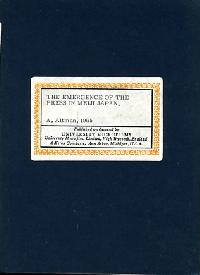 Yosha Bunko scan (low res)
Yosha Bunko scan (low res)
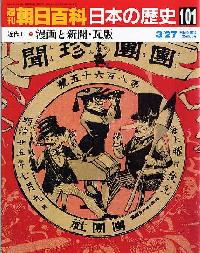 Yosha Bunko scan (low res)
Yosha Bunko scan (low res)
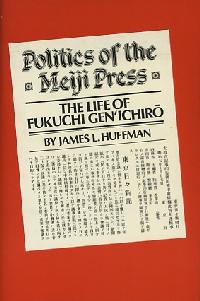 Yosha Bunko scan (low res)
Yosha Bunko scan (low res)
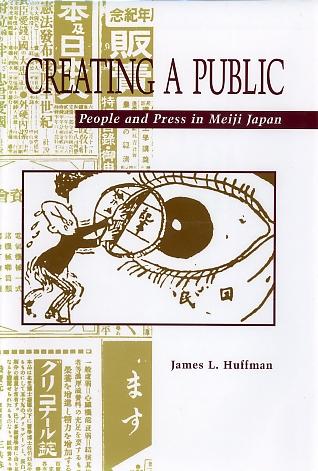 Yosha Bunko scan (low res)
Yosha Bunko scan (low res)
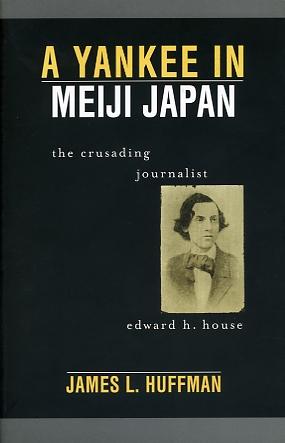 Yosha Bunko scan (low res)
Yosha Bunko scan (low res)
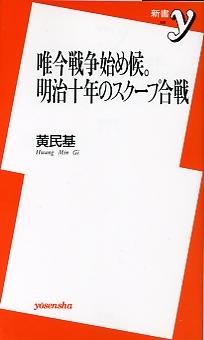 Yosha Bunko scan (low res)
Yosha Bunko scan (low res)
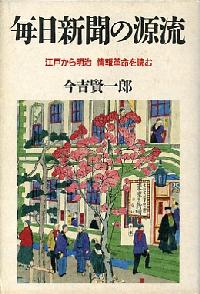 Yosha Bunko scan (low res)
Yosha Bunko scan (low res)
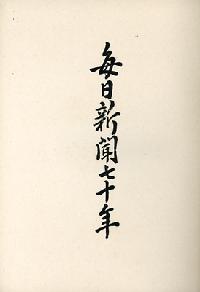
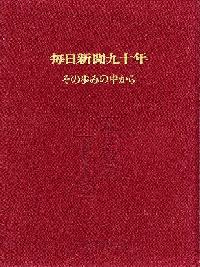
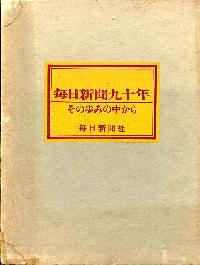
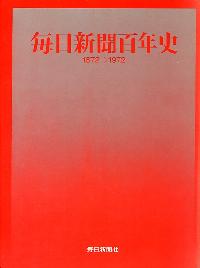
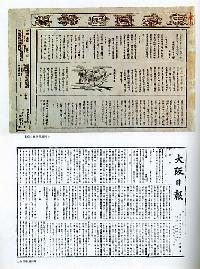
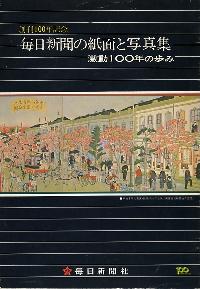
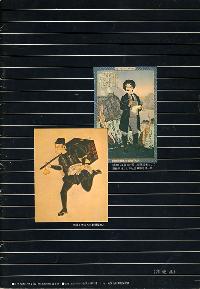
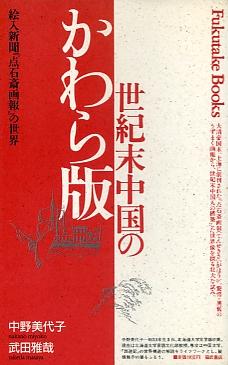
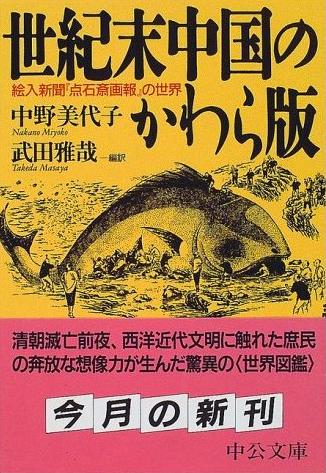
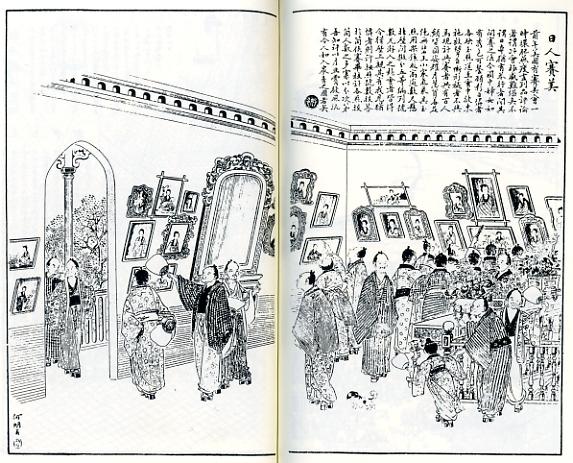
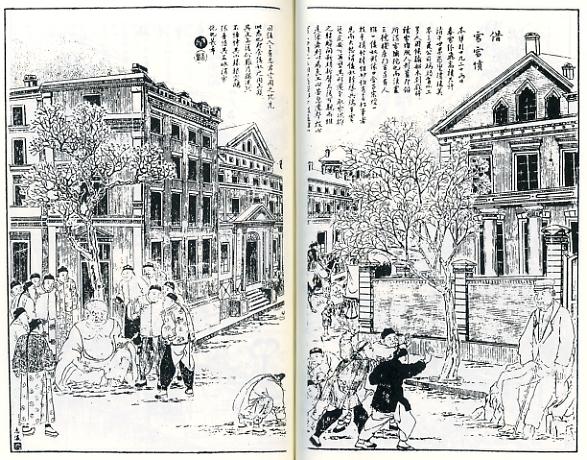
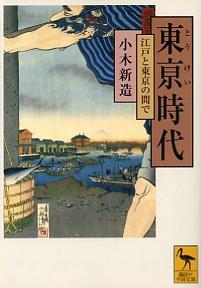 Yosha Bunko scan (low res)
Yosha Bunko scan (low res)
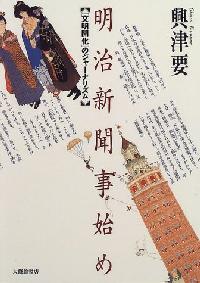 Yosha Bunko scan (low res)
Yosha Bunko scan (low res)
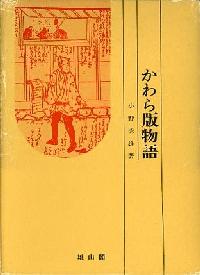 Yosha Bunko scan (low res)
Yosha Bunko scan (low res)
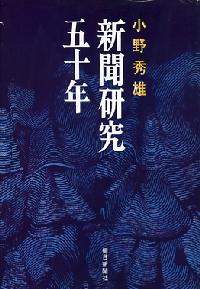 Yosha Bunko scan (low res)
Yosha Bunko scan (low res)
 Yosha Bunko scan (low res)
Yosha Bunko scan (low res)
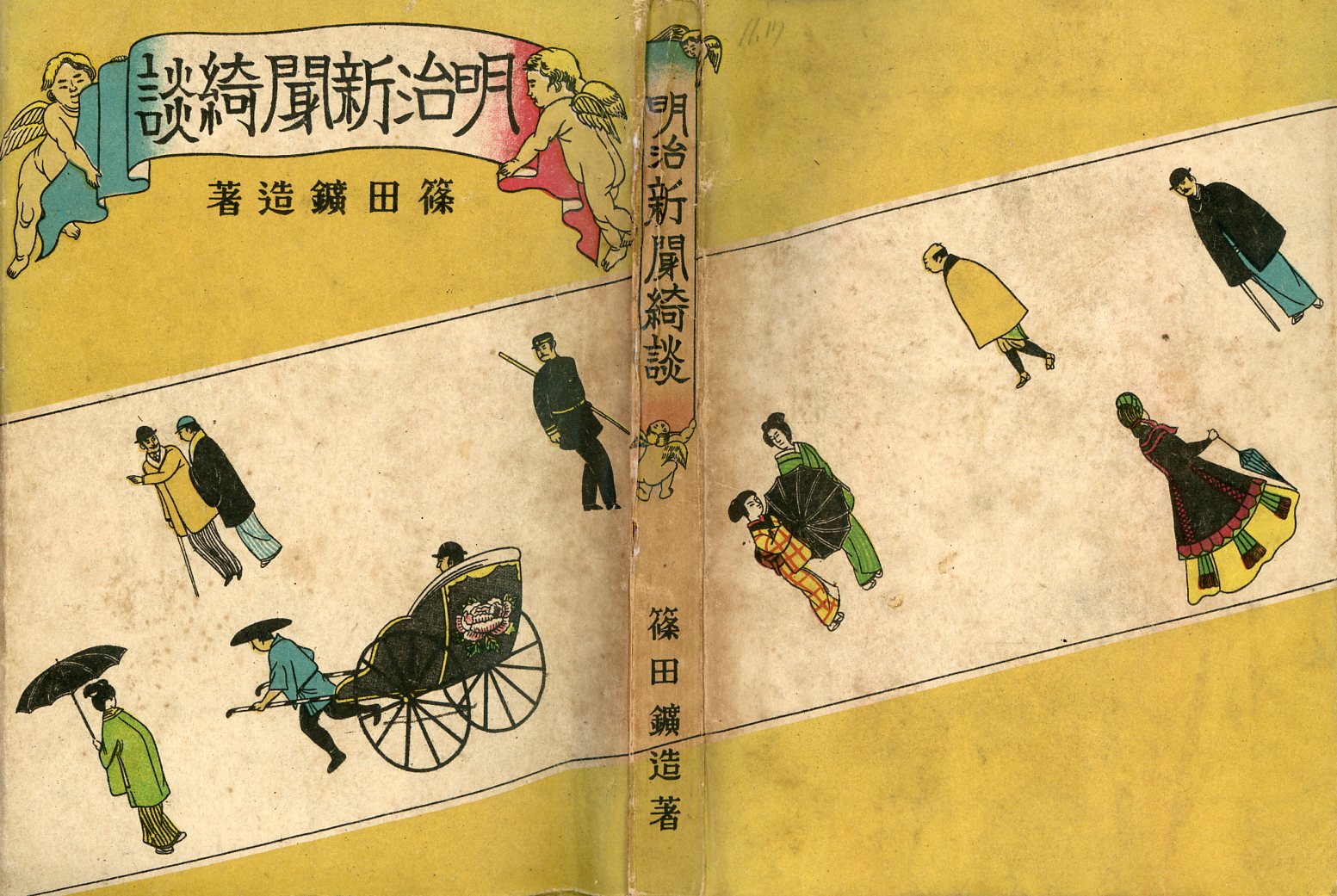
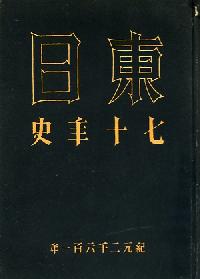
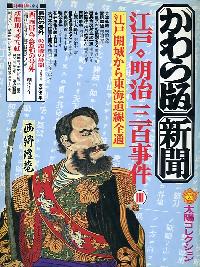 Yosha Bunko scan (low res)
Yosha Bunko scan (low res)
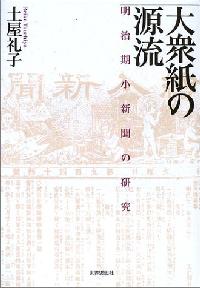 Yosha Bunko scan (low res)
Yosha Bunko scan (low res)
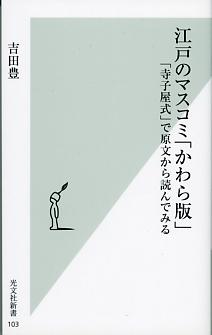 Yosha Bunko scan (low res)
Yosha Bunko scan (low res)
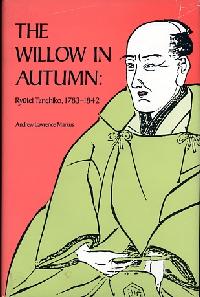 Yosha Bunko scan (low res)
Yosha Bunko scan (low res)
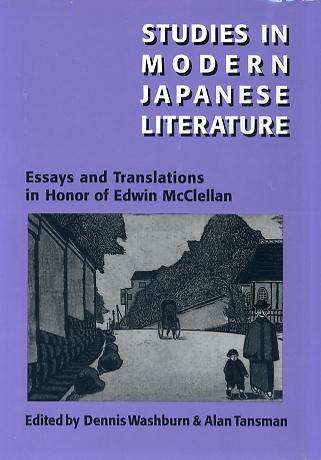 Yosha Bunko scan (low res)
Yosha Bunko scan (low res)
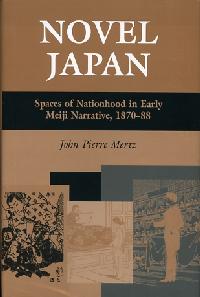 Yosha Bunko scan (low res)
Yosha Bunko scan (low res)
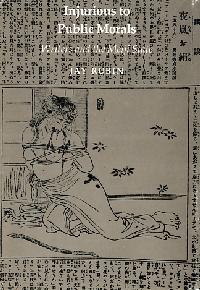 Yosha Bunko scan (low res)
Yosha Bunko scan (low res)
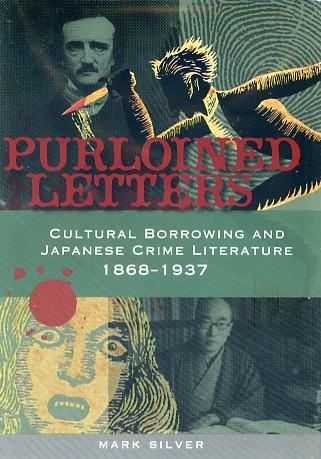 Yosha Bunko scan (low res)
Yosha Bunko scan (low res)
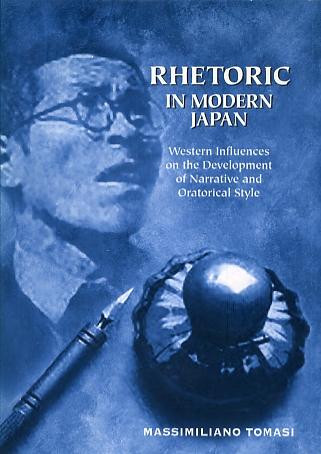 Yosha Bunko scan (low res)
Yosha Bunko scan (low res)
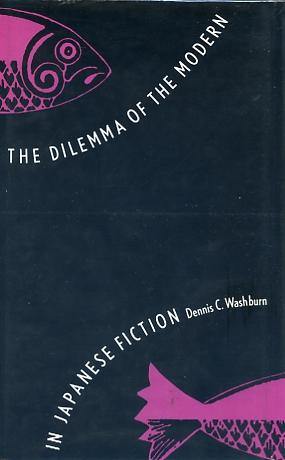 Yosha Bunko scan (low res)
Yosha Bunko scan (low res)